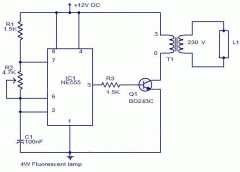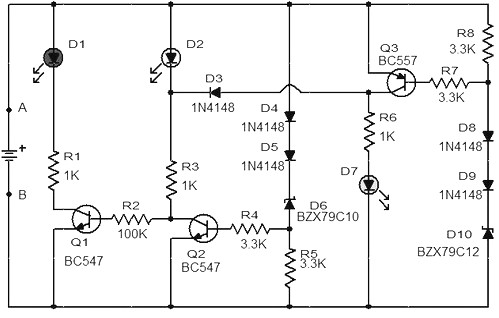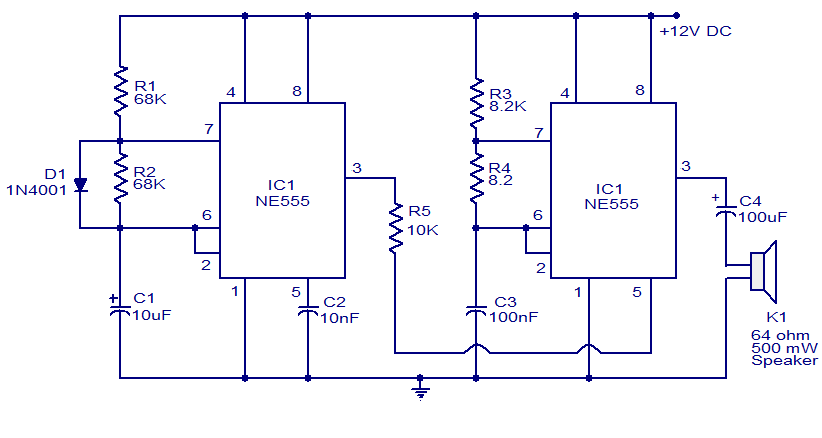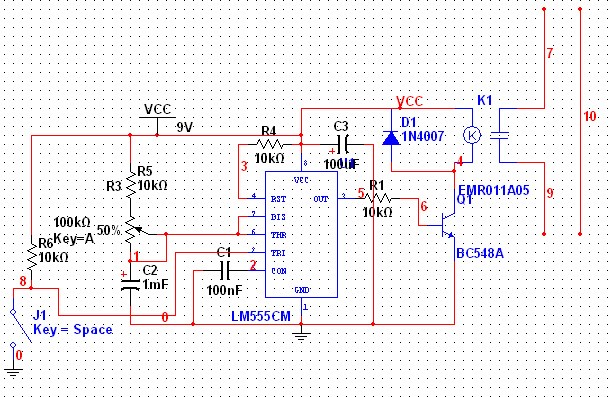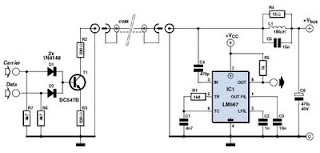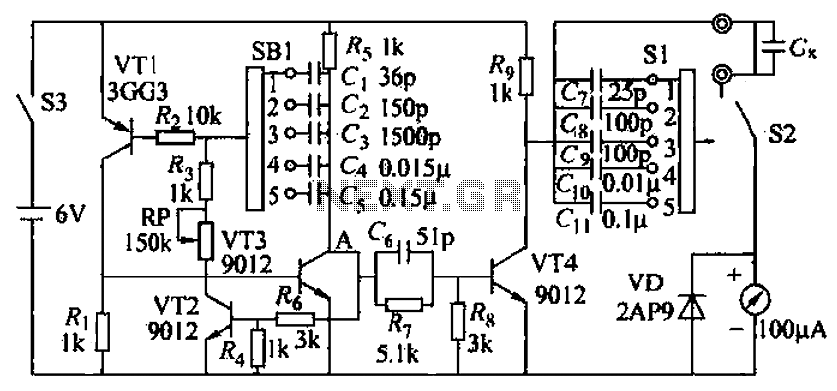
Five stalls can control fan speed optical circuit
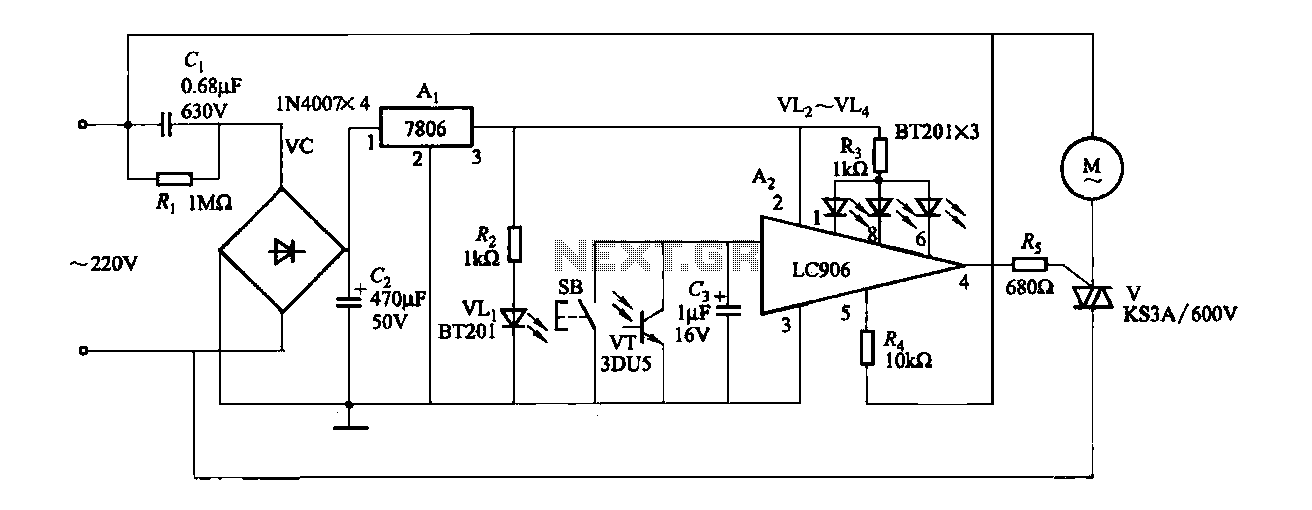
The ceiling fan speed control circuit depicted in Figure 3-6 utilizes a capacitor step-down method and a three-terminal fixed 7806 voltage regulator. It achieves fan speed control through the integrated circuit A2, which regulates the conduction angle of the Triac V. The circuit is activated by pressing the button SB, allowing A2 to cycle through different speed settings, effectively reducing the conduction angle to control the fan speed.
The ceiling fan speed control circuit is designed to modulate the speed of a ceiling fan using a combination of a capacitor step-down method and a voltage regulation approach. The circuit incorporates a three-terminal fixed voltage regulator, specifically the 7806, which provides a steady output voltage of 6V. This stable voltage is essential for the reliable operation of the integrated circuit A2, which manages the fan speed.
The control mechanism involves a Triac, designated as V, which regulates the power delivered to the fan motor by altering its conduction angle. The conduction angle is the portion of the AC cycle during which the Triac is turned on, thereby controlling the amount of power supplied to the fan. By adjusting this angle, the fan speed can be varied smoothly.
User interaction with the circuit is facilitated through a push-button switch, labeled SB. When pressed, this switch initiates a sequence in which the integrated circuit A2 cycles through predefined speed settings. This cycling allows for multiple speed options, typically ranging from low to high, and includes an off setting. Each speed corresponds to a specific conduction angle, with lower speeds achieved by reducing the conduction angle, thus providing a finer control over the fan's operation.
This circuit design exemplifies a practical application of power electronics in home appliances, demonstrating how simple components can work together to achieve efficient and user-friendly control of ceiling fan speeds. Proper implementation of this circuit ensures that the fan operates quietly and efficiently at the desired speed, enhancing comfort in living spaces.Fans (Ceiling) Fifth gear speed control circuit shown in Figure 3-6. It uses capacitor step-down, three-terminal fixed 7806 integrated steady voltage regulator Ai regulator to achieve fan speed control integrated circuit A2 through LC906 control Triac V conduction angle. Order press the button SB. A2 will be 4 feet by a block 1 block 2 block -3 -4 -5 stop a block off a one block. cycling issue a control signal, so that V conduction block smaller race, to achieve speed.
The ceiling fan speed control circuit is designed to modulate the speed of a ceiling fan using a combination of a capacitor step-down method and a voltage regulation approach. The circuit incorporates a three-terminal fixed voltage regulator, specifically the 7806, which provides a steady output voltage of 6V. This stable voltage is essential for the reliable operation of the integrated circuit A2, which manages the fan speed.
The control mechanism involves a Triac, designated as V, which regulates the power delivered to the fan motor by altering its conduction angle. The conduction angle is the portion of the AC cycle during which the Triac is turned on, thereby controlling the amount of power supplied to the fan. By adjusting this angle, the fan speed can be varied smoothly.
User interaction with the circuit is facilitated through a push-button switch, labeled SB. When pressed, this switch initiates a sequence in which the integrated circuit A2 cycles through predefined speed settings. This cycling allows for multiple speed options, typically ranging from low to high, and includes an off setting. Each speed corresponds to a specific conduction angle, with lower speeds achieved by reducing the conduction angle, thus providing a finer control over the fan's operation.
This circuit design exemplifies a practical application of power electronics in home appliances, demonstrating how simple components can work together to achieve efficient and user-friendly control of ceiling fan speeds. Proper implementation of this circuit ensures that the fan operates quietly and efficiently at the desired speed, enhancing comfort in living spaces.Fans (Ceiling) Fifth gear speed control circuit shown in Figure 3-6. It uses capacitor step-down, three-terminal fixed 7806 integrated steady voltage regulator Ai regulator to achieve fan speed control integrated circuit A2 through LC906 control Triac V conduction angle. Order press the button SB. A2 will be 4 feet by a block 1 block 2 block -3 -4 -5 stop a block off a one block. cycling issue a control signal, so that V conduction block smaller race, to achieve speed.
